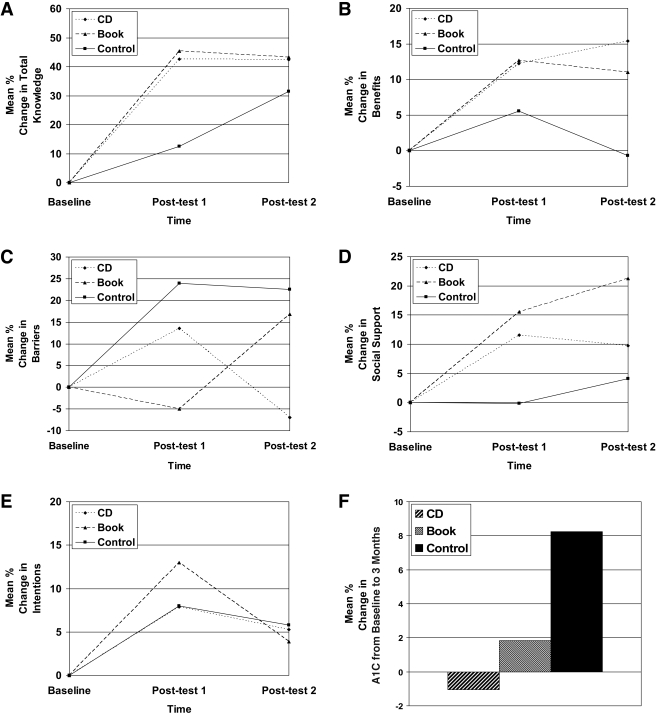Figure 1—
Group response profiles for outcome variables expressed as percent change from baseline values to follow-up post-test values. A: Total knowledge (diabetes pregnancy, contraception, sexuality, and family planning), a summation of 25 dichotomous items (correct = 1, incorrect = 0, % correct). B: Perceived benefits of seeking PC and using family planning, a summation of five Likert-type items (possible range = 5–25). C: Perceived barriers to seeking PC and using family planning, a summation score of five Likert-type items (possible range = 5–25). D: Perceived availability of social support (emotional, informational, and instrumental) with PC and family planning, a summation of eight Likert-type items (possible range = 8–40). E: Intention to seek PC and use effective family planning, a summation of three items (1 = unlikely through 7 = likely; possible range = 3–21). F: A1C (metabolic control) measured by the home Accu-Base HbA1c Sample Collection Kit. Blood fingerstick assays were analyzed in Vanderbilt Pathology Lab Services, Vanderbilt University Medical Center, using a high-performance liquid chromatography analyzer (ion-exchange method) (Bio-Rad Diamat HPLC; Bio-Rad, Hercules, CA). The reference range for the Diamat HPLC was 4.2–5.8%. Baseline = pretest; post-test 1 = immediate postintervention; and post-test 2 = 3-month follow-up. Three-month analyses were conducted on completed longitudinal data from 47 subjects (16 [34%] CD, 16 [34%] book, and 15 [32%] control) controlling for sexual activity and age as covariates.

